View basket (0 items $0.00)
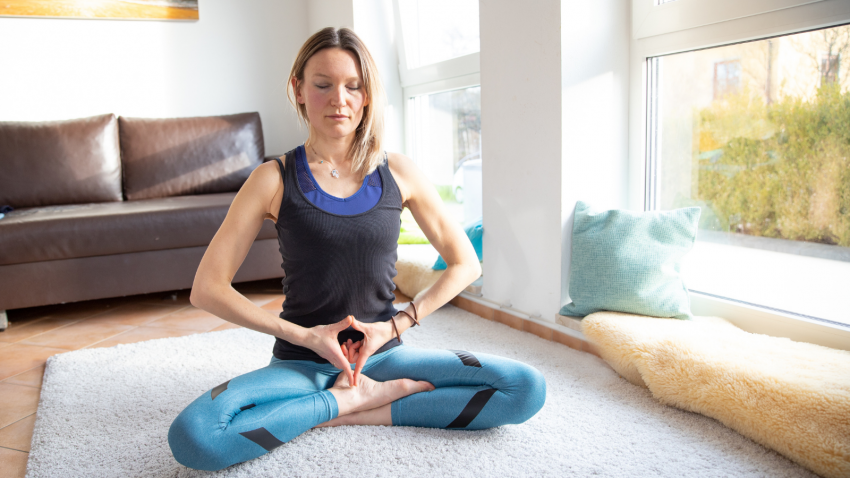
The Link Between Stress and Fertility: How Yoga for Infertility Can Help
The fact that infertility is a major emotional crisis isn’t news to anyone on this journey. A study conducted by Harvard University showed that infertility produced the same levels of anxiety and depression as patients diagnosed with cancer, hypertension, and heart attack.[1]
But infertility is more than just “stressful.” Lots of situations cause stress in our lives. Working too much is stressful, not having enough money is stressful, moving is stressful. If you’re dealing with infertility, you might be willing to trade infertility for many of the life stressors listed above. Infertility is not only stressful; it can be traumatic! Finding support to overcome this trauma will have a lasting impact on your fertility.
The Impact of Trauma on Fertility
Trauma is described as “experiences or situations that are physically devastating, and/or emotionally painful and distressing, and that overwhelm people’s coping mechanisms, leaving them feeling out of control and powerless.”[2] This may sound familiar if you are dealing with infertility.
Trauma’s impact is both emotional and physical. Both are important to treat [3] and yoga for infertility is unique in the way it supports both the physical and emotional impacts of trauma. Of course, support groups and therapists can provide emotional support, and these are really important as well. What about the physical impact of stress and trauma? These can show up in many different ways.
What’s important to understand is that it can:
-
Disrupt the nervous system (internal systems are in overdrive)
-
Trigger body armoring (extremely tight muscles)
-
Weaken your immune system[4]
All of these physical responses can have a negative impact on fertility. Regardless of any medical diagnosis, when your nervous system is in overdrive, your muscles and tissues are locked, and you are prone to getting sick, then your body is likely not in ideal shape to have a baby. In order to break the trauma cycle of infertility, it is imperative to figure out how to reduce its effect on the body. The nervous system is a great place to start.
Yoga for Infertility: How to Break the Trauma Cycle
The nervous system is an involuntary part of our bodies, meaning we can’t consciously control what it does. It’s impossible to “think” your nervous system into relaxation. One of the best ways to support the nervous system is to work through your body’s tissues. Complementary healthcare, such as massage, acupuncture, and yoga therapy reduces stress[5] and can soothe the nervous system via the tissues. These therapies are used throughout the world to care for families struggling with infertility. They are widely available, inexpensive, and non-invasive.
Yoga for infertility connects the mind and body, which can help reduce both the physical and emotional effects of infertility and trauma, using practices and poses that create optimal conditions for getting pregnant.
In addition to yoga for infertility, there are also ways you can reduce the effects of stress and trauma at home. One of the most effective ways is to limit as many physical and emotional stressors as possible and increase things that feel nourishing. This includes:
-
Eating easy-to-digest, healthy foods
-
Practicing gentle, repetitive movements that are not over-heating
-
Reducing outside stimulation, such as violent news stories, social media, and people who drain your energy
-
Connecting with other women who have traveled this path.
How to Practice Yoga for Infertility
Here are the best yoga poses that will help promote fertility and reduce stress and trauma. They are easy to practice at home and can be practiced in as little as 10 minutes a day. Practice the ones that feel nourishing for you.
Seated Cat Pose (Bidalasana) Helps to open the heart, expand energy in the pelvis. The back-and-forth motion between these two versions of the pose helps to regulate the nervous system, countering the effects of stress.
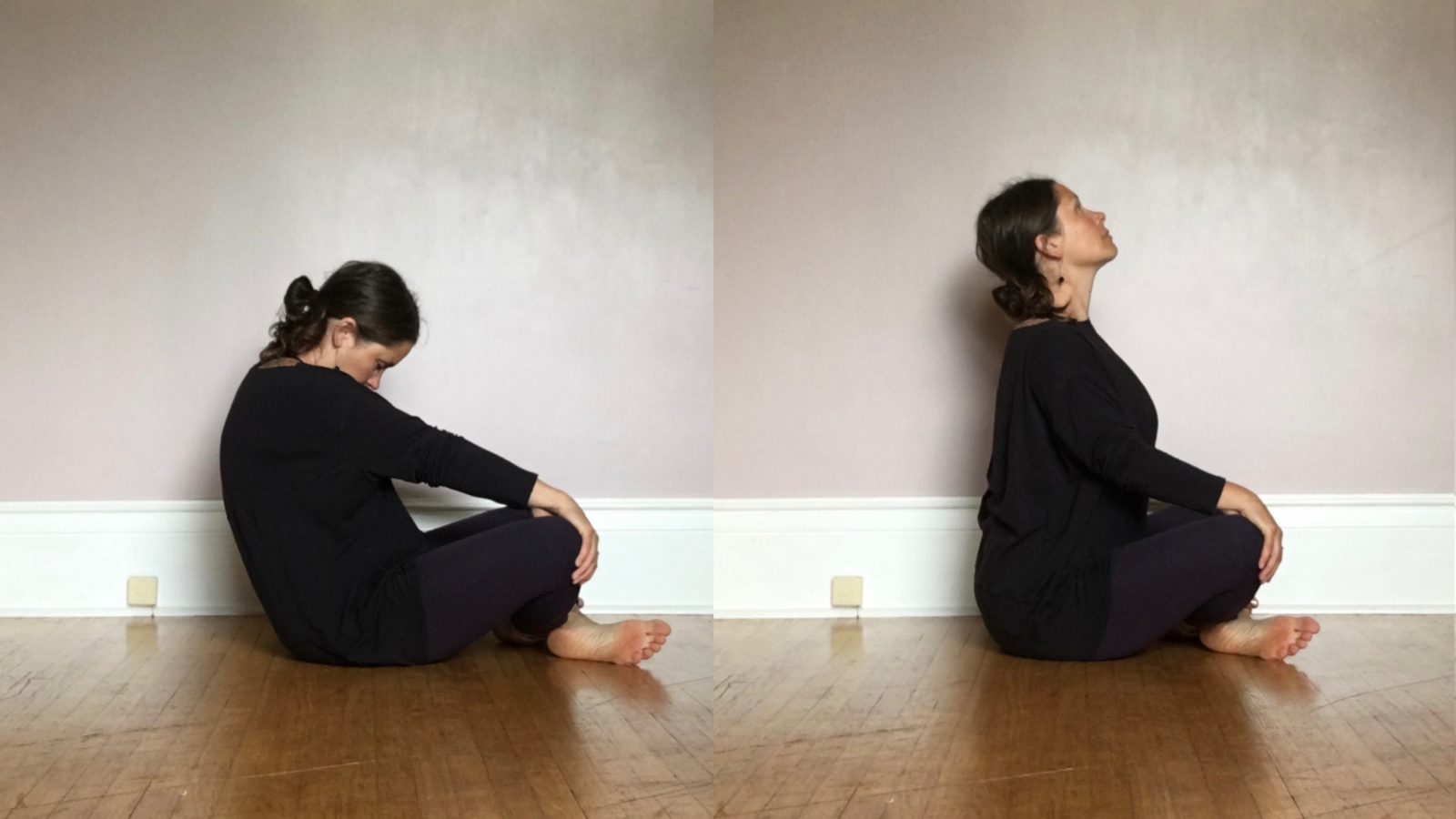
Mountain Pose (Tadasana) This pose is grounding and empowering. You can practice it between other standing poses to pause and reflect on your intention, while feeling strong and steady “in your own feet.”
Pigeon Pose Variation (Kapotasana) This is a beautiful, accessible variation of the deep hip openers, Pigeon and Figure Four Pose (Ardha Utkatasana). You can practice it throughout the day to open the hips, which is beneficial for conception. The forward fold reduces anxiety and the effects of trauma.

Standing Forward Bend Pose (Uttanasana) Forward bends can be beneficial for reducing anxiety and the effects of trauma. A variation with legs together will help release back tension, holding in the buttocks and opening the back legs. Use a block under your hands to bring the floor closer. Keep your legs bent to allow your pelvis to tip forward in order to keep your spine and sacroiliac joint in a healthy position. Bending your knees also allows you to ease into and feel comfortable in the stretch.
Child’s Pose (Balasana) This yoga pose is deeply restorative, helping promote calmness and inner reflection. It releases pressure in the lower back and hips, and it can relieve cramping during menstruation.
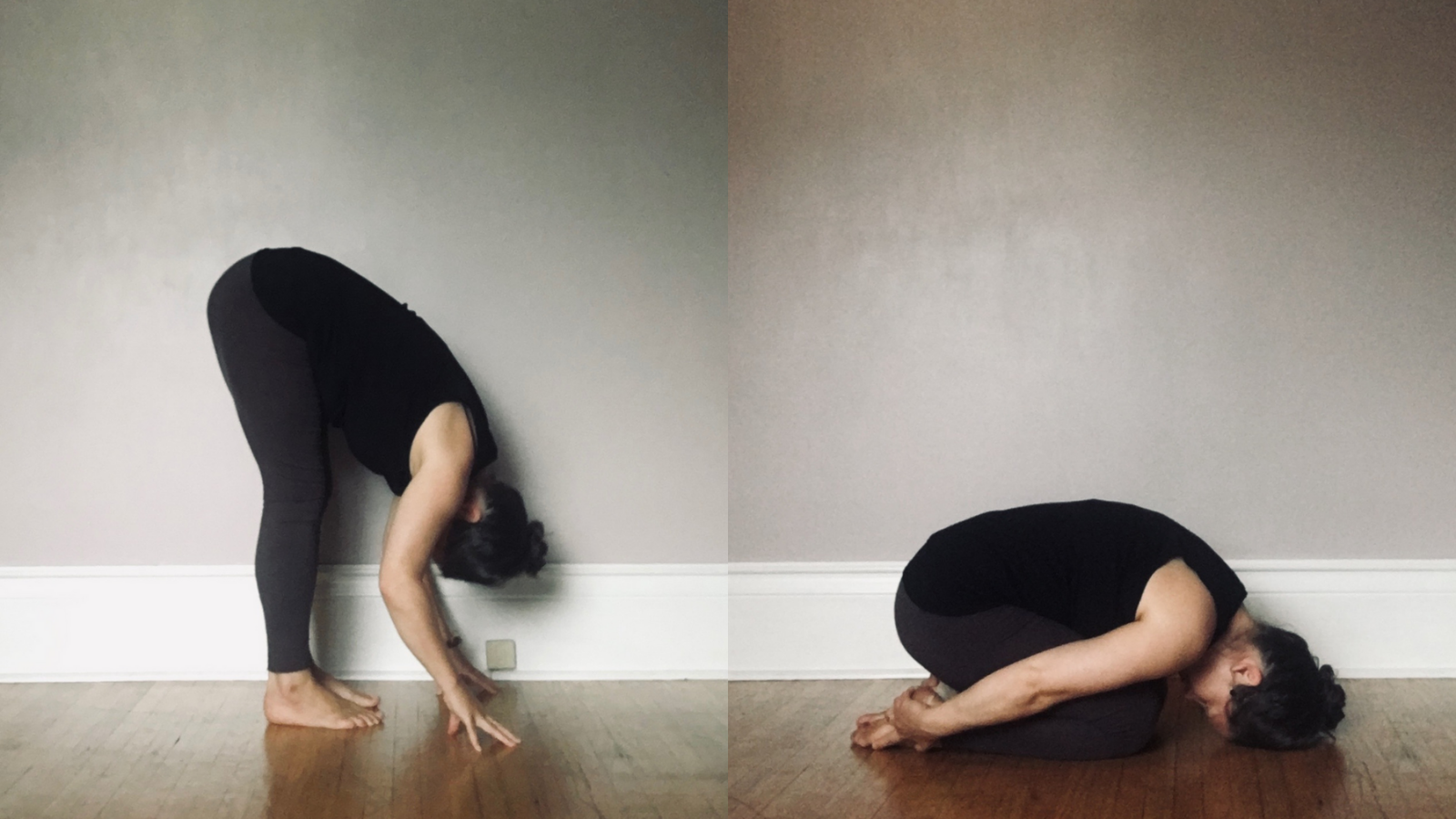
Seated Wide-Angle Pose (Upavista Konasana) This seated variation of a forward bend has the same mental-emotional effects as the standing variation. Widening your legs will open the hips. Seated forward bends can feel grounding.
Legs Up the Wall Pose (Viparita Karani) This is a restorative pose that can be used as a variation for the final resting pose of your practice, and for mediation. Practicing Viparita Karani can reduce anxiety. It releases tension in the lower back and hips and promotes circulation in the reproductive organs for both men and women. During the first phase of your cycle, add a firm blanket under your hips for a subtle inversion. It may help reduce menstrual cramps.
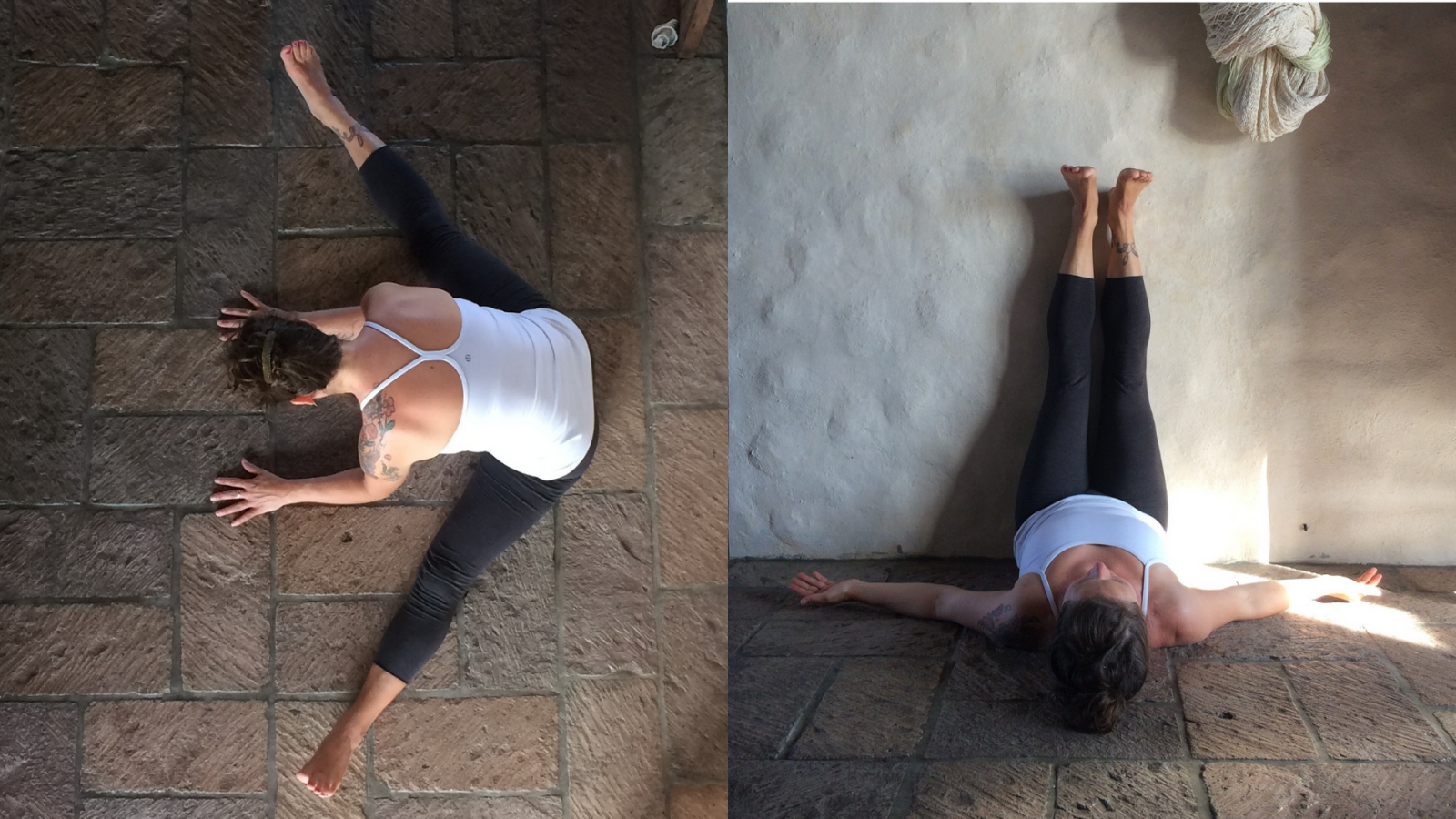
Reprinted with permission from www.katlinrobinson.com
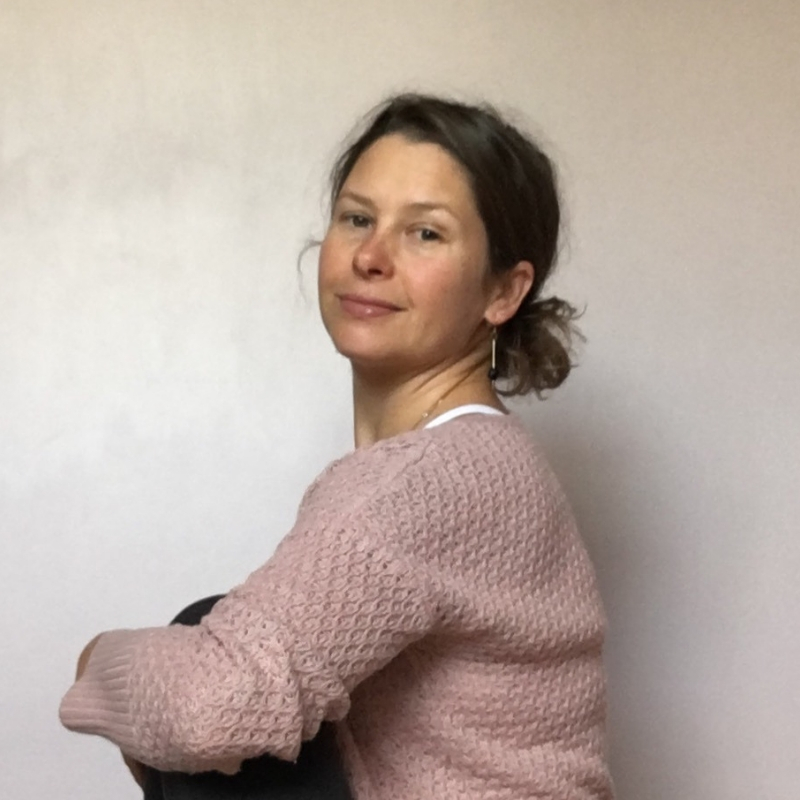 Katlin Robinson is a CIAYT certified Yoga Therapist, ERYT200 / RYT500 Yoga Teacher, and has been practicing yoga and mindfulness techniques for almost 20 years. She specializes in Yoga for mental health, and women’s wellness including teenage anxiety, fertility, mother care, perimenopause, and beyond. She has a special interest in complex and childhood trauma. She offers workshops, group classes, and one-on-one yoga therapy. She also offers advanced professional training and mentorships for yoga teachers (RYT300 and CE), and mental health professionals interested in using yoga practices and philosophy to support their client’s mental health. Her focus is teaching the richer inner teachings & traditions of yoga to reduce stress, enrich people’s lives and promote healing at the deepest level of Self.
Katlin Robinson is a CIAYT certified Yoga Therapist, ERYT200 / RYT500 Yoga Teacher, and has been practicing yoga and mindfulness techniques for almost 20 years. She specializes in Yoga for mental health, and women’s wellness including teenage anxiety, fertility, mother care, perimenopause, and beyond. She has a special interest in complex and childhood trauma. She offers workshops, group classes, and one-on-one yoga therapy. She also offers advanced professional training and mentorships for yoga teachers (RYT300 and CE), and mental health professionals interested in using yoga practices and philosophy to support their client’s mental health. Her focus is teaching the richer inner teachings & traditions of yoga to reduce stress, enrich people’s lives and promote healing at the deepest level of Self.
Sources
[1] “The psychological impact of infertility and its treatment” www.health.harvard.edu , May 1, 2009 (No author provided)
[2] https://www.samhsa.gov/trauma-violence
[3] Levine, Peter A., Waking the Tiger: Healing Trauma; van der Kolk, Bessel M.D., The Body Keeps the Score: Rain, Mind and Body in the Healing of Trauma
[4] Pennebaker, J., KiecoltGlasser, J & Glasser, R. (1987) Disclosure of traumas and immune function. Health implications for psychotherapy. Journal of consulting and Clinical Psychology, 56, 239245
[5] Koopman, J., Berkeley Scientific Journal, 2013, The Experimental effects of stress on fertility
Featured Courses









